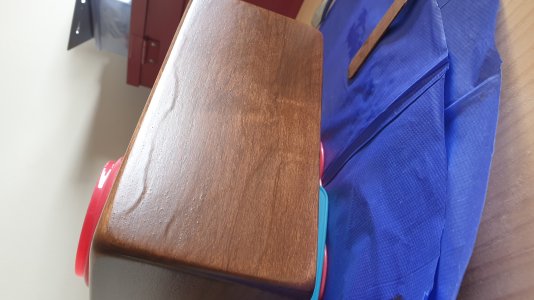twofires
New member
Hi all. I'd appreciate a bit of advice on smoothing out the finish on my Crack base.
I've glued the base together, sanded, and stained with British Paints' Timber Protect One Coat Oil-based Stain (which went well), and then applied their matching clear coat (which went less well). The result is as per the attached photo.
Apparently sags and dust nibs like that are pretty common, but the advice on what to do about it varies. Some say lightly sand wet with 320 or so grit, then finer as required, others say use a much finer grit wet and spend more time on it. Some then say apply another coat (not sure if that's appropriate for a 'one coat' product like this), while others say buff wax into it.
The other complicating factor is that I chose a satin finish, not gloss.
I have no experience with any of this, but would prefer not to sand through the clear and remove stain underneath. How would you go about making this better, without risking making it worse?
Thank you in advance.
Simon
I've glued the base together, sanded, and stained with British Paints' Timber Protect One Coat Oil-based Stain (which went well), and then applied their matching clear coat (which went less well). The result is as per the attached photo.
Apparently sags and dust nibs like that are pretty common, but the advice on what to do about it varies. Some say lightly sand wet with 320 or so grit, then finer as required, others say use a much finer grit wet and spend more time on it. Some then say apply another coat (not sure if that's appropriate for a 'one coat' product like this), while others say buff wax into it.
The other complicating factor is that I chose a satin finish, not gloss.
I have no experience with any of this, but would prefer not to sand through the clear and remove stain underneath. How would you go about making this better, without risking making it worse?
Thank you in advance.
Simon

